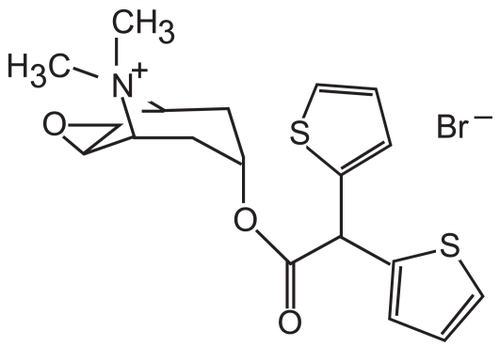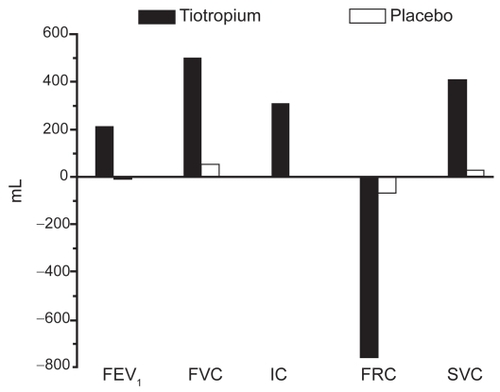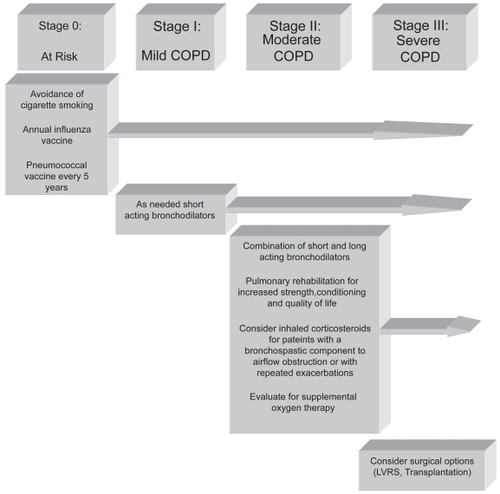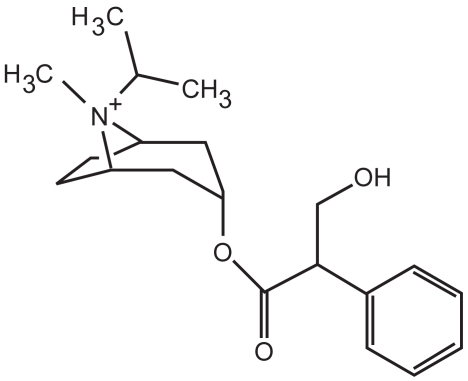Figures & data
Figure 1 Pulmonary muscarinic cholinergic receptors. M1 and M3 receptors mediate bronchoconstriction and mucus production in the lung. M2 receptors inhibit M1 and M3 receptors via negative feedback. Ipratropium inhibits all three muscarinic receptors. Tiotropium quickly dissociates from the M2 receptor but continues to antagonize the M1 and M3 receptor. Thus, tiotropium blocks bronchoconstriction and allows inhibition of bronchoconstriction to continue. The slow dissociation of tiotropium from the M1 and M3 receptors accounts for its long half-life.

Figure 3 Tiotropium bromide. Note the similarity to ipratropium () and the presence of the quaternary nitrogen group, which is responsible for its efficacy.

Table 1 Anticholinergics used in the management of COPD
Figure 4 Tiotropium improves lung volumes compared with placebo. Reproduced from CitationCelli B, ZuWallack R, Wang S, et al. 2003. Improvement in resting inspiratory capacity and hyperinflation with tiotropium in COPD patients with increased static lung volumes. Chest, 124:1743–8. Copyright © 2003, with permission from CHEST.

Table 2 Stages of COPD
Figure 5 Treatment of COPD by stage. Reproduced from CitationLipson DA. 2004. Redefining treatment in COPD: new directions in bronchodilator therapy. Treat Respir Med, 3:89–95. Erratum in Treat Respir Med, 3:181. Copyright © 2004, with permission from Adis International Ltd.

